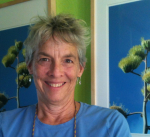A Fine Time, with Mary Ruth Smith
 Monday, February 27, 2012 at 09:44PM
Monday, February 27, 2012 at 09:44PM 
The Texas Federation of Fiber Artists happened this end-of-February in Kerrville. I had a great time at the events in Kerrville that I attended. (And a wonderful time during the open studio at El Cielo on Friday, with special guest artists Robin Early, Sarah Burke and Mary Lance.)
Tops on the list: Mary Ruth Smith's stitching class. Just to hear her stories and her approach to her meticulous and amazing work was worth the price of admission to the entire conference. (Mary Ruth says take photos, but not of her face...)
Let the photos inspire:

The piece above is layers of French knots -- Mary Ruth says it takes aabout 2 hours to stitch one square inch, about 200 hours in each of the pieces in this series (and she is FAST).
Mary Ruth says that she works with stitch in three ways: to construct fabric (as with the French knot piece above), to embellish and to draw. Some pieces use one approach, others several. She most often uses only one kind of stitch in a piece -- ie, thousands of seed stitches, thousands of cross stitches or thousands of those knots. Looking at her work, I noticed that quite a few also had maybe two different stitches -- one constructing the surface and one embellishing it.
I've been stitching (by hand) ever since the weekend, and have these observations:
Hand stitiching for me is quite meditative. I think I can give up yoga (no, not really... the shoulders say otherwise).
It takes a LONG TIME. Hand Stitch is the "slow craft" that calls to me. I get antsy with some tedious chores, but not hand-stitching.
I can travel with hand stitch projects -- even walking the Camino this summer, I should be able to carry along something!
I like black thread and the black lines that stitching with it makes. A lot.
The overlay idea (putting a very sheer black fabric over ones first layer of stitch) is a novel and interesting way to play with value and to tie together bits of small appliqued fabrics -- it serves to hold down all the little threads and edges without fusing or satin stitching the entire edge. Mary Ruth used to buy her sheer Japanese made chiffon scarves at WalMart, but they no longer seem to carry them. She finds them now at (http://www.meinketoy.com/) Meinke Toy. HOWEVER, I think I found a substitute yesterday at the local wholesale florist -- in San Antonio at Travis Wholesale Florist. It's a very sheer, very transparent length of fabric sold as a decor sheer. $6 for a whole lot of cloth. I'm sending a piece to Mary Ruth immediately!
Another great source she shared for yarns, sari strips and paper yarn, perfect for couching: Darn Good Yarn.
She also likes to color her fabric before stitching sometimes with scraps of disperse dye painted papers. These dyes, for polyester and other synthetic fabrics only, are similar to the Crayola fabric iron on dye crayons. She now uses a product from ProChem called Prosperse Dyes. Here's a helpful YouTube with textile artist Mary Gamester that illustrates several ways to use this kind of product. And a helpful one-page sample from a book by Carolyn Dahl.
The picture directly below on the left shows at the bottom of the picture an interesting and simple way to mount these stitched and stretched art works. Mary Ruth stretches her muslin or other fabric around standard sized stretcher boards. When the work is finished, she may remove it and wrap it around another display board, then she nails a smaller by one inch covered stretcher bars onto the back of the piece with the art stretched around it. This gets the hanging hardware, (ie a 13" by 13" art piece is backed with a 12" by 12" stretcher boards stretched with plain muslin).



 Susie Monday
Susie Monday
Just saw this great post from Leslie Jenison about the Mary Ruth Smith workshop -- she has even more pics and details at http://leslietuckerjenison.blogspot.com/2012/03/mary-ruth-smith-workshop.html





